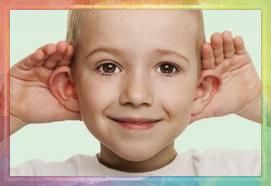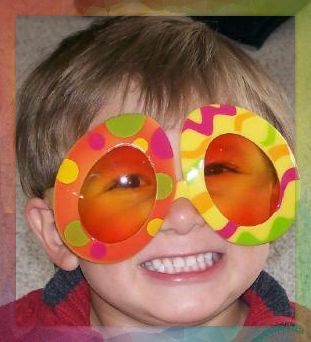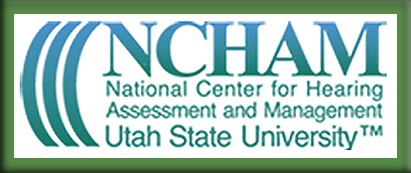ECHO Initiative Events
New OAE
Webinars:
Monday, July 29, 2019
2-3 p.m. ET
Tuesday, Aug. 19, 2019
2-3 p.m. ET
* * * * * * * * * * *
Tuesday, Aug. 20th, 2019
2-3 p.m. ET
* * * * * * * * * * *
Thursday, Aug. 22nd 2019
2-3 p.m.
* * * * * * * * * * *
Additional Training Opportunities:
Link to Previous
Recorded Webinars:
Our most recent
recorded ECHO Initiative / NCHAM webinar from
May 7, 2019:
* * * * * * * *
If you've missed any of
our other previous webinars,
|
|
|
|
I
f your program is new to OAE screening, or if you have added new staff who need instruction on OAE screening practices,
where staff can view instructional video modules
and access the
corresponding resources.
|
|
Quick Links
|
|  Find more helpful hints from previous issues of Probes and Tips and many other
resources at: www.kidshearing.org |
|
|
 |
|
Common Questions to Address
When Developing Sensory
Screening Practices
You have
 probably heard the term "sensory screening," but have
also encountered the
te
rms hearing and vision screening. To be clear, the term "sensory screening" typically refers to both hearing and vision screening. While often bundled together in requirements, each constitutes a separate screening process in
formed by established guidelines.
probably heard the term "sensory screening," but have
also encountered the
te
rms hearing and vision screening. To be clear, the term "sensory screening" typically refers to both hearing and vision screening. While often bundled together in requirements, each constitutes a separate screening process in
formed by established guidelines.
Implementing effective, evidence-based screening practices shoul
d be undertaken with support from
professionals who will be completing the follow-up assessments on children not passing the screenings. For hearing screening, it is valuable to consult with a pediatric audiologist. For vision screening, it is helpful to consult with an
 ophthalmologist. It is also important to consu
lt with your Health Services Advisory Committee and the health care providers
who serve children in your program so that efforts are coordinated and results are communicated to the set of professionals who all play a role in screening, assessment and treatment.
ophthalmologist. It is also important to consu
lt with your Health Services Advisory Committee and the health care providers
who serve children in your program so that efforts are coordinated and results are communicated to the set of professionals who all play a role in screening, assessment and treatment.
Although hearing and vision screening focus on two very different areas of functioning, these two areas share a set of questions worth considering as you continue to develop your sensory screening practices. These questions will be addressed as a part of a webinar on July 29th, focusing on establishing evidence-based hearing and vision screening practices for children birth to five years of age.
1. What conditions are targeted by the screening?
Typically, screening programs target the most common conditions and/or conditions that represent the g
re
atest risk for an individual. There are a wide range of auditory and visual disorders that can affect a child's development and learning. Not every condition can be identified by ava
ilable screening methods performed by lay individuals, but some can. As you develop your hearing and vision screening programs it is important to have an understanding o
f what conditions you are screening for, and why. Sometimes the age of the child may affect what conditions can be screened for. Since there are always conditions that can't be the target of a hearing or vision screening, parents or caregiver concerns about hearing or vision almost always warrant a referral for evaluation, even if the child passed the previous screening.
On the other hand, sometimes screening programs may actually help identify conditions that are not the primary target of the screening. It is important to be a
ware of this possibility. For example, recommended hearing screening practices target permanent hearing loss. However, the initial steps of the hearing screening process may also pick up some children who have fluctuating loss (often caused by an ear infection or otitis media) which health care providers may decide to monitor or treat. While identifying children with temporary conditions of concern is a valuable added benefit of the screening, ear infections are seldom, if ever, the primary focus of an annual hearing screening.
Be sure to answer the following questions as you develop your hearing and vision screening practices:
- What conditions are we screening for?
- What is the typical incidence of these conditions?
- What is the relationship between these conditions and school readiness?
- What conditions, if any, might we help identify along the way but which are not the target of the screening?
2. What are the most effective screening methods to identify the targeted conditions?
While the importance of hearing and vision screening has long been recognized, the methods for screening continue to be actively developed. To be sure you are using the most current, evidence-based practice, it is essential to consult with professionals in hearing and vi
sion and to refer to current practice recommendations, taking into account the population of children being served, the settings in which screening will be conducted, and who will be trained to use the tools.
Several important considerations to address include:
 3. Who should conduct the screening and who should facilitate
the s
teps of the referral proces
s when further assessment is needed?
3. Who should conduct the screening and who should facilitate
the s
teps of the referral proces
s when further assessment is needed?
Many people
er
roneously assume that all needed hearing and vision screenings are routinely completed by health care providers as part o
f well-child visits. This is not usually the case. For example, most health care providers check the child's outer and
middle ear, but they do not typi
cally have the equipment needed to conduct a hearing screening that checks cochlear (inner ear) function. Because that is not typically done as part of all children's well-child visits, many early care and education programs have found that it works best to own screening equipment, train screeners to ensure that all children within the program are screened, and then to work closely wit
h
health care providers and pediatric audiologists so that children who do not pass receive appropriate follow-up assessment. It is equally important to find out what types of vision screening are, and are not, being done as a part of well-child visits so that your program's screening efforts are coordinated and targeted appropriately.
Several important considerations to address include:
- In order to achieve the aims of your screening programs, who should be providing the screening, and how will the referral process be managed so that all children not passing a screening receive the recommended follow-up?
- What documentation and tracking systems need to be in place to support the screening activities?
- If any aspect of the screening and follow-up process involves individuals or entities outside of the program, how will this be facilitated in a manner that supports the achievement of the screening goals for all children?
To learn more about sensory screenings, please join the ECHO Initiative at Utah State University and the National Center for Children's Vision and Eye Health at Prevent Blindness for a webinar provided in conjunction with the National Center on Early Childhood Health and Wellness:
on
Monday, July 29, 2019, 2:00 - 3:30 EDT.
This webinar is free and will outline
currently recommended evidence-based hearing and vision early detection practices for children birth through 5 years of age. Presenters will also explore resources that are available to help you plan your sensory screening activities, how to access training, and where to find other tools to implement follow-up activities.
Check out resources on screening practices at:
|
 |
Have any other questions about coordinating your hearing screening efforts with specialists and health care providers?
If so, let us know at:
And, as always, share
www.KidsHearing.org
with anyone you think would benefit from our resources.
|
|

2615 Old Main Hill
Logan, UT 84322
|
|
|